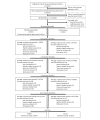Effectiveness of the Safe Step Digital Exercise Program to Prevent Falls in Older Community-Dwelling Adults: Randomized Controlled Trial
- PMID: 40163860
- PMCID: PMC11997535
- DOI: 10.2196/67539
Effectiveness of the Safe Step Digital Exercise Program to Prevent Falls in Older Community-Dwelling Adults: Randomized Controlled Trial
Abstract
Background: Falls among older adults are a significant public health issue due to their high incidence, severe consequences, and substantial economic impact. Exercise programs incorporating balance and functional exercises have been shown to reduce fall rates, but adherence and scaling up the interventions remain challenges. Digital technology offers a promising avenue to deliver this type of exercise, potentially improving exercise adherence and enabling self-management of exercise in the aging population.
Objective: This study aims to assess the effectiveness of the Safe Step app, a self-managed, unsupervised, home-based digital exercise program, in reducing fall rates or fall risk in community-dwelling older adults. Additional aims were to describe fall-related injuries in both the exercise and control groups, study attrition, and adherence to the Safe Step exercise program.
Methods: Community-dwelling individuals, aged 70 years or older, who had experienced falls or a decline in balance in the past year were randomized to either an exercise group using the Safe Step app combined with educational videos, or a control group receiving educational videos alone. Both interventions lasted for 1 year. Information regarding fall events was self-reported monthly through questionnaires. Exercise adherence was monitored through questionnaires every third month. Negative binomial and logistic regression estimated the incidence rate ratio of fall rate and the risk ratio (RR) of experiencing falls, respectively. Fall-related injuries, study attrition, and exercise adherence were reported descriptively.
Results: In total, 1628 people were enrolled in the study, 79% were women, and the mean age was 75.8 (SD 4.4) years (range 70-94 years). The intention-to-treat analysis showed no significant difference in fall rates between the exercise and control groups after 12 months (2.21 falls per person-year in the exercise group and 2.41 in the control group; incidence rate ratio 0.92, 95% CI 0.76-1.11; P=.37). The risk of experiencing at least 1 fall was significantly lower (11%) in the exercise group compared to the control group (53% vs 59.6%; RR 0.89, 95% CI 0.80-0.99; P=.03). No differences were observed regarding the risk of 2 or more falls (34.1% in the exercise group, 37.1% in the control group; RR 0.92, 95% CI 0.79-1.06; P=.23). Injurious fall rates were similar between the exercise and control group. During the trial, 161 (20%) participants from the exercise group and 63 (8%) from the control group formally withdrew. The proportion of exercise group participants meeting the 90-minute weekly exercise goal was 12.7%, 13.4%, 8.6%, and 9.1% at 3, 6, 9, and 12 months, respectively.
Conclusions: Access to a self-managed unsupervised digital exercise program can be an effective component of a primary fall prevention strategy for community-dwelling older adults. Further research is needed to explore the mediating factors that influence the outcomes and develop strategies that enhance adherence for optimal impact in this population.
Trial registration: ClinicalTrials.gov NCT03963570; https://clinicaltrials.gov/study/NCT03963570.
International registered report identifier (irrid): RR2-10.1136/bmjopen-2019-036194.
Keywords: accidental falls; aging; digital technology; effectiveness; electronic health; exercise therapy; fall prevention; geriatric medicine; independent living; mobile health; older adults; preventive medicine; randomized controlled trial; self-management.
©Beatrice Pettersson, Lillemor Lundin-Olsson, Dawn A Skelton, Per Liv, Magnus Zingmark, Erik Rosendahl, Marlene Sandlund. Originally published in the Journal of Medical Internet Research (https://www.jmir.org), 31.03.2025.
Conflict of interest statement
Conflicts of Interest: DAS is a Director of Later Life Training, a not-for-profit training company in the United Kingdom that delivers group fall prevention exercise training (Otago and FaME) to health and fitness professionals. The app was developed collaboratively, and it will not be sold for profit.
Figures



References
-
- Step safely: strategies for preventing and managing falls across the life-course. World Health Organization. 2021. [2025-03-07]. https://www.who.int/publications/i/item/978924002191-4 .
-
- Schoene D, Heller C, Aung YN, Sieber CC, Kemmler W, Freiberger E. A systematic review on the influence of fear of falling on quality of life in older people: is there a role for falls? Clin Interv Aging. 2019;14:701–719. doi: 10.2147/CIA.S197857. https://www.tandfonline.com/doi/abs/10.2147/CIA.S197857?url_ver=Z39.88-2... 197857 - DOI - DOI - PMC - PubMed
-
- James SL, Lucchesi LR, Bisignano C, Castle CD, Dingels ZV, Fox JT, Hamilton EB, Henry NJ, Krohn KJ, Liu Z, McCracken D, Nixon MR, Roberts NLS, Sylte DO, Adsuar JC, et al The global burden of falls: global, regional and national estimates of morbidity and mortality from the global burden of disease study 2017. Inj Prev. 2020;26(Supp 1):i3–i11. doi: 10.1136/injuryprev-2019-043286. http://injuryprevention.bmj.com/lookup/pmidlookup?view=long&pmid=31941758 injuryprev-2019-043286 - DOI - PMC - PubMed
Publication types
MeSH terms
Associated data
LinkOut - more resources
Full Text Sources
Medical
Miscellaneous

